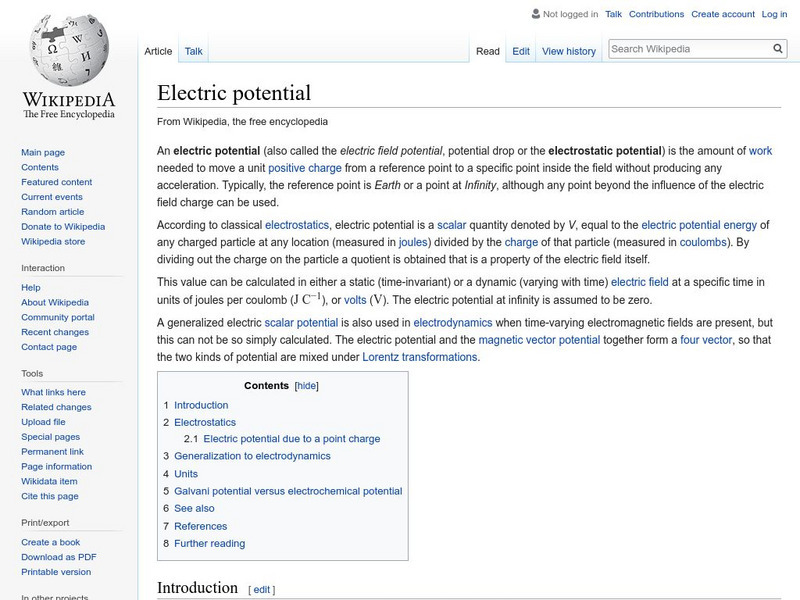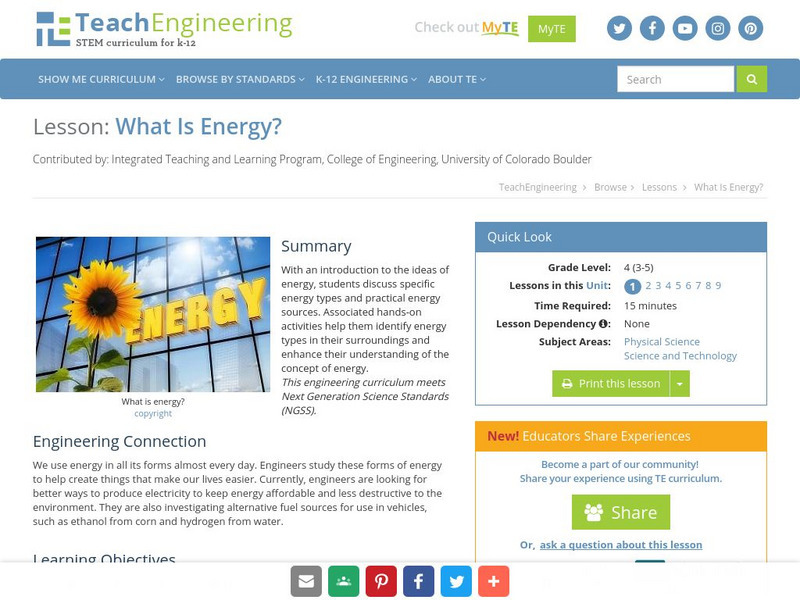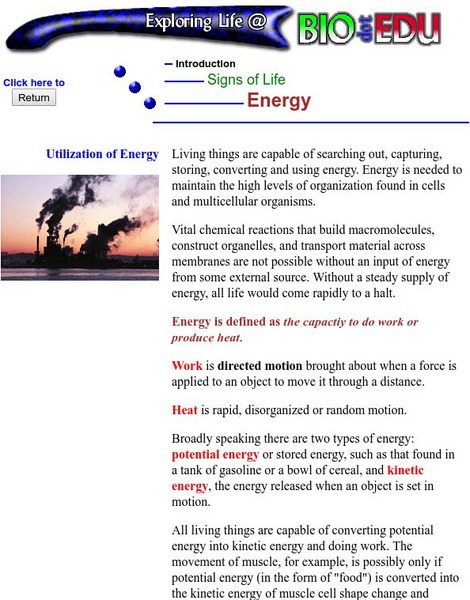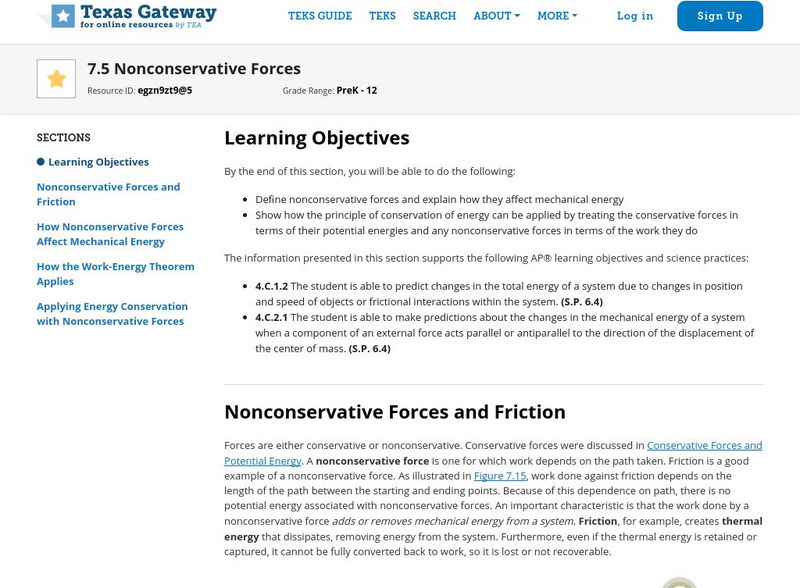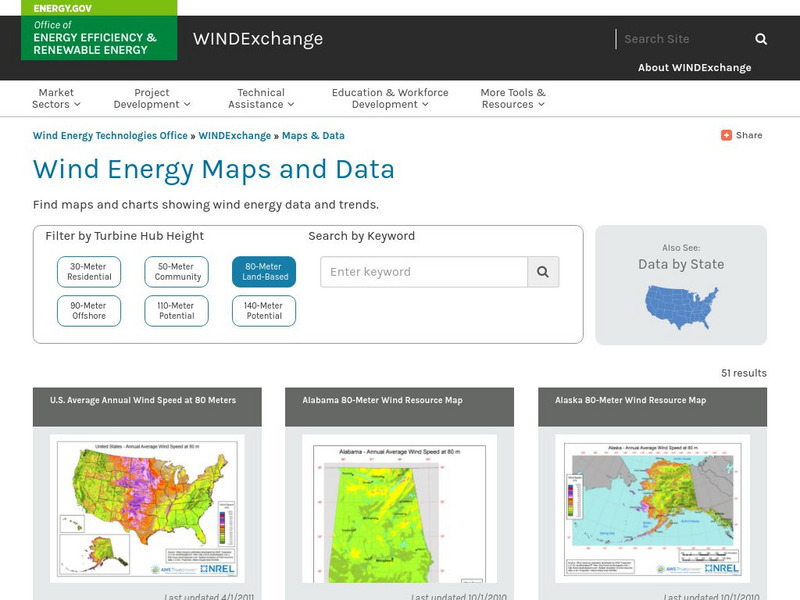Hi, what do you want to do?
Wikimedia
Wikipedia: Electrical Potential
Wikipedia provides detailed information on electrical potential, including a definition, introduction, and mathematical formulas.
TeachEngineering
Teach Engineering: What Is Energy?
With an introduction to the ideas of energy, students discuss specific types of energy and the practical sources of energy. Hands-on activities help them identify types of energy in their surroundings and enhance their understanding of...
Energy for Sustainable Development
Esd Bulgaria: Kids & Energy: Seven Energy Principles
Outlines the seven main principles of energy.
City University of New York
Energy: Characteristics of Life
An explanation of types of energy, how living things use energy and how they can convert energy forms. This is a good, basic, start to studying this characteristic of life.
Science Education Resource Center at Carleton College
Serc: Com Padre: Introduction to Work and Energy: The Hopper Popper Surprise
This activity will provide young scholars with a qualitative understanding of the Work-Energy Theorem, especially on how the energy transferred depends on the distance over which the force is applied.
Science Education Resource Center at Carleton College
Serc: Using Your Marbles: Making Energy Work for You
This activity is based on the common experiment of running a marble down a ramp to do work on a cup. Learners will be able to see the relationship between mass and energy of the marble and the ramp height.
Physics Aviary
Physics Aviary: Practice Problems: Energy From Elastic Graph
Students must find how much energy has been added to a spring by looking at the Force vs. Spring Length graph.
Concord Consortium
Concord Consortium: Energy of Bond Formation
Explore distance and energy of bond formation.
FT Exploring
Ft Exploring: Energy Conversions: Potential to Kinetic Energy
Find out how gravitational potential energy is converted to kinetic energy, then finally into low-grade thermal energy.
NASA
Nasa: From Stargazers to Starships: Energy
Demonstrates how principles of kinetic energy, potential energy and energy conservation can be used to determine the speed of a descending object if given its initial height. Further discussion of other topics such as heat and...
Learn AP Physics
Learn Ap Physics: Physics B: Work and Energy
A site dedicated to help students prepare for the AP Physics B test. This specific site reviews work and energy including work-energy theorem, conservation of energy, potential energy and power. Site contains links to video lectures and...
Ducksters
Ducksters: Physics for Kids: Kinetic Energy
Kids learn about kinetic energy in the science of physics. The energy of motion can be calculated using mass and velocity. The standard unit is the joule. How it is different from potential energy.
Georgia State University
Georgia State University: Hyper Physics: Point Charge Potential
This site from the Georgia State University explains the concept of electric potential about a point charge or combination of severat point charges. An interactive JavaScript form allows the visitor to investigate the effect of distance...
McGraw Hill
Online Learning Center: Electric Potential and Capacitance
A series of pages which define key terms and explain basic concepts related to electric potential. Includes a set of practice problems with answers and solutions.
Khan Academy
Khan Academy: Test Prep: Mcat: Physical Processes: Electrostatics: Electric Potential
Discusses electric forces, electric fields, electric potential, and the role that electric potential plays in enabling materials to pass through a cell membrane.
State Energy Conservation Office-Texas
State Energy Conservation Office:energy Sources: Biomass Energy From Agriculture
Texas has the potential for becoming a leading provider of biomass energy due to its agricultural industry. Some crops produced in Texas, such as canola, switchgrass, sorghum, and sugarcane, have been identified as energy crops that...
Science Buddies
Science Buddies: Put Your Water to Work: Using Hydropower to Lift a Load
Water creates a lot of energy, just look at the Grand Canyon. In this science fair project, you will demonstrate the power of water by converting the kinetic energy in moving water to mechanical energy, which will lift a small weight.
Texas Education Agency
Texas Gateway: Nonconservative Forces
By the end of this section, you will be able to define nonconservative forces and explain how they affect mechanical energy, and to show how the principle of conservation of energy can be applied by treating the conservative forces in...
US Department of Energy
U.s. Department of Energy: Wind Program: Wind Powering America: Maps
An interactive map of the United States that gives information about each state's wind power potential.
Concord Consortium
Concord Consortium What Is Happening When a Spark Occurs?
Activity 1 of this module investigates: How does potential energy change when things are pushed or pulled? Exploring how force is related to potential energy, this activity investigates how potential energy is changed when a spring is...
Concord Consortium
Concord Consortium: How Can a Small Spark Start a Huge Explosion?
In this module Activity 3 investigates When atoms get close to each other, what happens to their potential energy? This activity applies energy concepts to compare the potential energy of atoms that are bonded as molecules with the...
Science Struck
Science Struck: The 13 Types of Energy and Their Applications
Read about all the different kinds of potential and kinetic energy. Includes energy formulas and examples of energy applications.
Physics Classroom
The Physics Classroom: Work and Energy: Energy Transformation on Roller Coasters
Using a roller coaster as an example, the transformation of mechanical energy from the form of potential to the form of kinetic and vice versa is explained and illustrated in the animation.
TED Talks
Ted: Ted Ed: All of the Energy in the Universe Is
The energy in the universe never increases or decreases- but it does move around a lot. Energy can be potential or kinetic. George Zaidan and Charles Morton get excited about energy. [3:52]
Other popular searches
- Kinetic and Potential Energy
- Potential Energy Diagram
- Gravitational Potential Energy
- Kinetic Potential Energy
- Elastic Potential Energy
- Calculating Potential Energy
- Physics Potential Energy
- Potential Energy Pendulum
- Kinetic vs. Potential Energy
- Forms of Potential Energy
- Potential Energy and Water
- Kinetic vs Potential Energy





